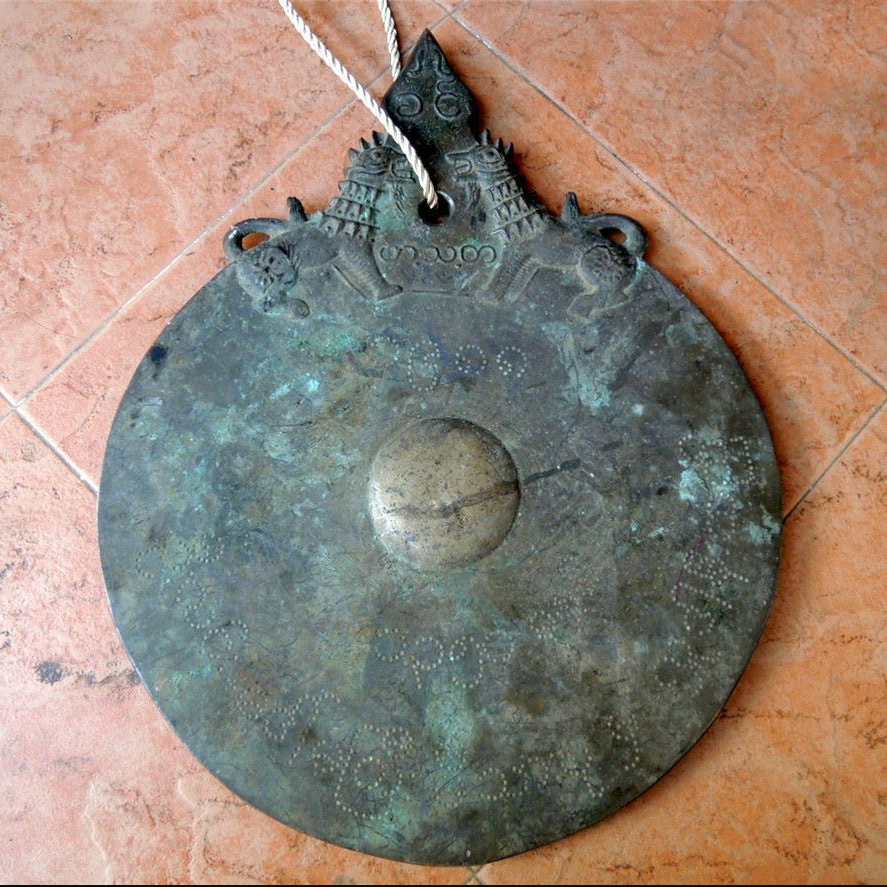The structure of the rhyme board
126 views · Organized by 碍与暧 on 2022-02-07
Cast in bronze, it is an isosceles triangular plate shaped like a flat fish head or a flattened felt hat.
There is a round hole in the middle of the upper obtuse angle, which is used to tie the rope hanger or carry it by hand. The lower two symmetrical acute angles are tilted upward, and the bottom edge is slightly arced outward. The two sides of the board are cast with various patterns such as lines and clouds. .
Chu use iron rods, dragon bamboo roots or wood. Bamboo or wood, the head is 21 cm long, the diameter is 10 cm, and the handle is 27 cm long. When playing, hold the rope with the left hand and percussion with the right hand. It can rotate with the help of the inertia of the tapping, and the sound waves are lingering and the reverberation is endless.
There is a round hole in the middle of the upper obtuse angle, which is used to tie the rope hanger or carry it by hand. The lower two symmetrical acute angles are tilted upward, and the bottom edge is slightly arced outward. The two sides of the board are cast with various patterns such as lines and clouds. .

Chu use iron rods, dragon bamboo roots or wood. Bamboo or wood, the head is 21 cm long, the diameter is 10 cm, and the handle is 27 cm long. When playing, hold the rope with the left hand and percussion with the right hand. It can rotate with the help of the inertia of the tapping, and the sound waves are lingering and the reverberation is endless.
Involving musical instruments
Yunban (pinyin: yun ban) belongs to the percussion instrument category among the body-sounding instruments. It is a percussion instrument of the Dai, Brown, De'ang, Achang and other ethnic groups. In the Dai language, it is called Gan, Lagan, Sister Borrowing, and Delivery. The local Han people call it Yunban, Yunqing, Yunban, and copper bells. Popular in Xishuangbanna, Dehong, Lincang and other areas in Yunnan Province.
 渝公网安备 50010702504639号
渝公网安备 50010702504639号